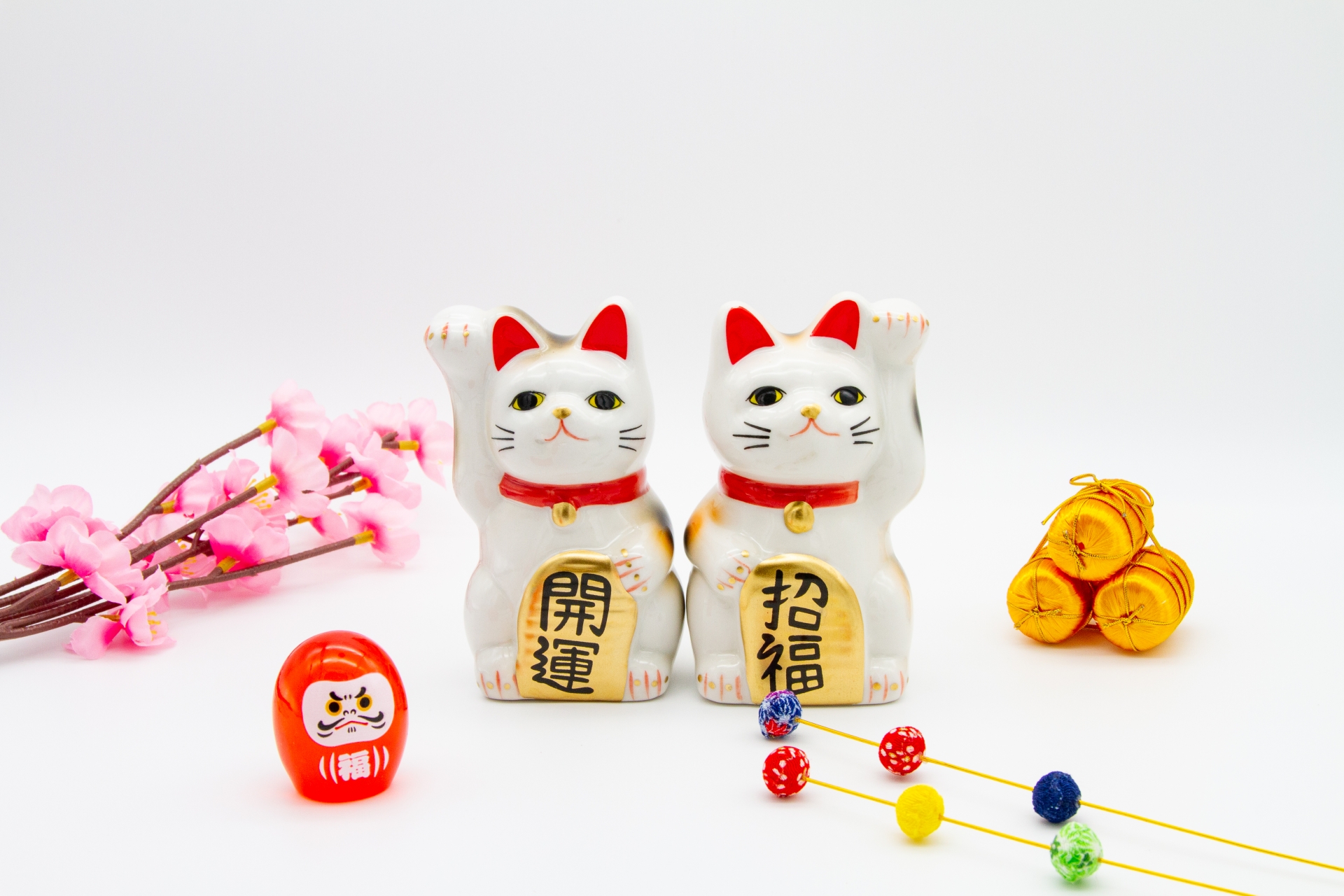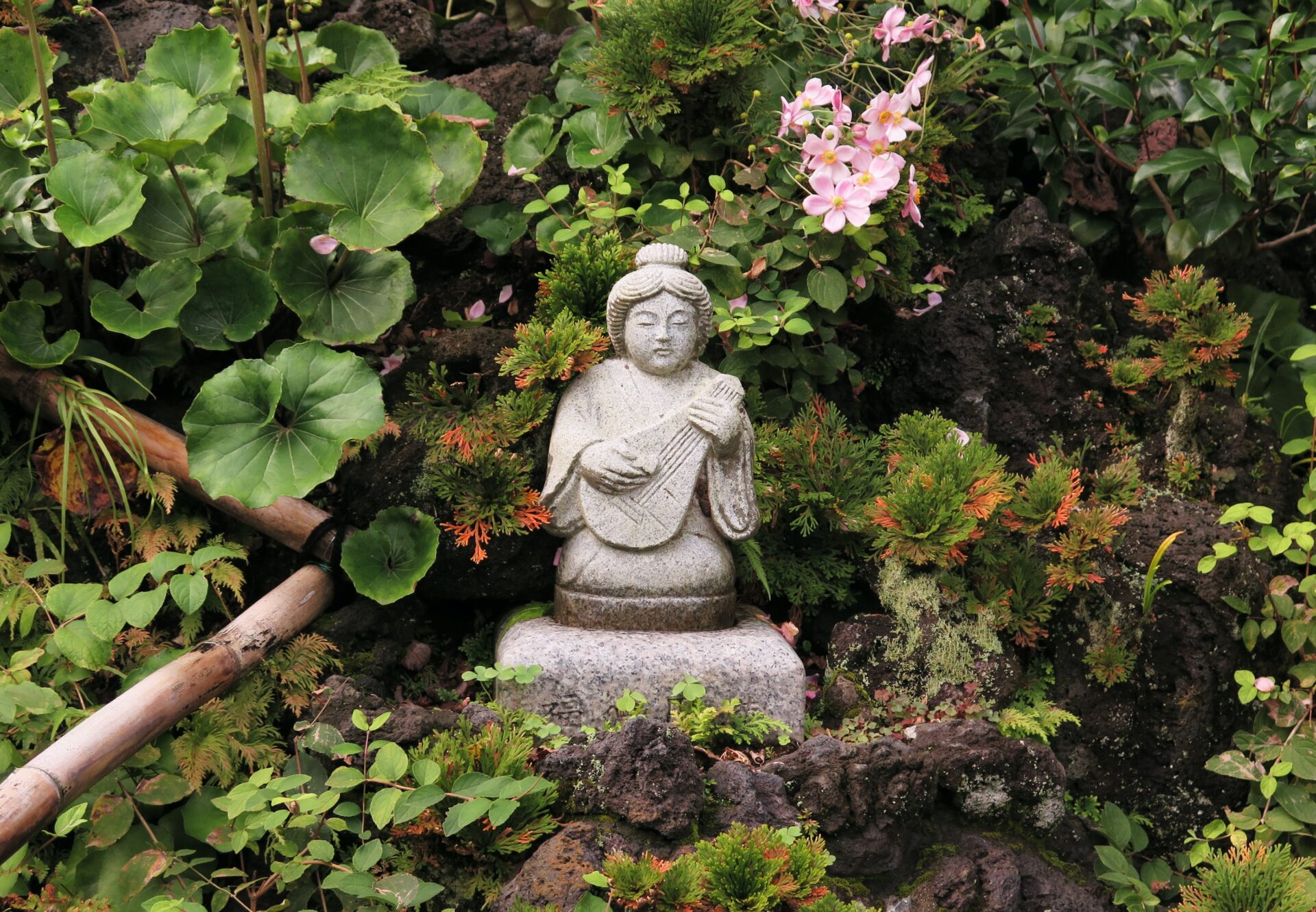Cats have a long history of being considered lucky animals in East Asian folklore. They are associated with bringing good business and fortune to people. And if you have ever been to a Chinese restaurant or shop anywhere in the world, you may have come across statues of often golden cats that seem to be beckoning you inside. Those who watch Japanese anime or play Japanese video games may have also come across depictions of this beckoning cat. But did you know that the beckoning cat, or maneki neko, has its origins in Japan? What is maneki neko, what’s the meaning behind this lucky cat, and what is its origin story? Let’s dive into the world of the maneki neko from Japan!

Stefanie Akkerman moved from the Netherlands to Japan in 2013 with her Japanese husband and son. She jumped into the niche of Dutch tour guiding in Tokyo and Kamakura in 2015 and occasionally writes articles about all the great sights and activities Japan has to offer. She loves (Japanese) food, and to work that all off she goes diving, snorkeling, cycling, or hiking.
This post may contain some affiliate links. When you click through and make a purchase we may receive some commission, at no extra cost to you.
Origin Story of Maneki Neko
The story of the maneki neko goes back to the Edo Period. As is usually the case with old legends and stories, there are multiple versions of the origin story of the Japanese lucky cat. The most famous story is the one about a man who was in the beautiful garden of a temple when he saw a cat in the temple who appeared to be beckoning him. He found that an interesting thing to happen, so he decided to follow the cat to see what was going on. It was right then when lightning struck the exact spot where the man was just standing a few seconds ago. Feeling that he owed his life to this cat, the man donated a lot of money to the temple, helping the temple flourish like never before.
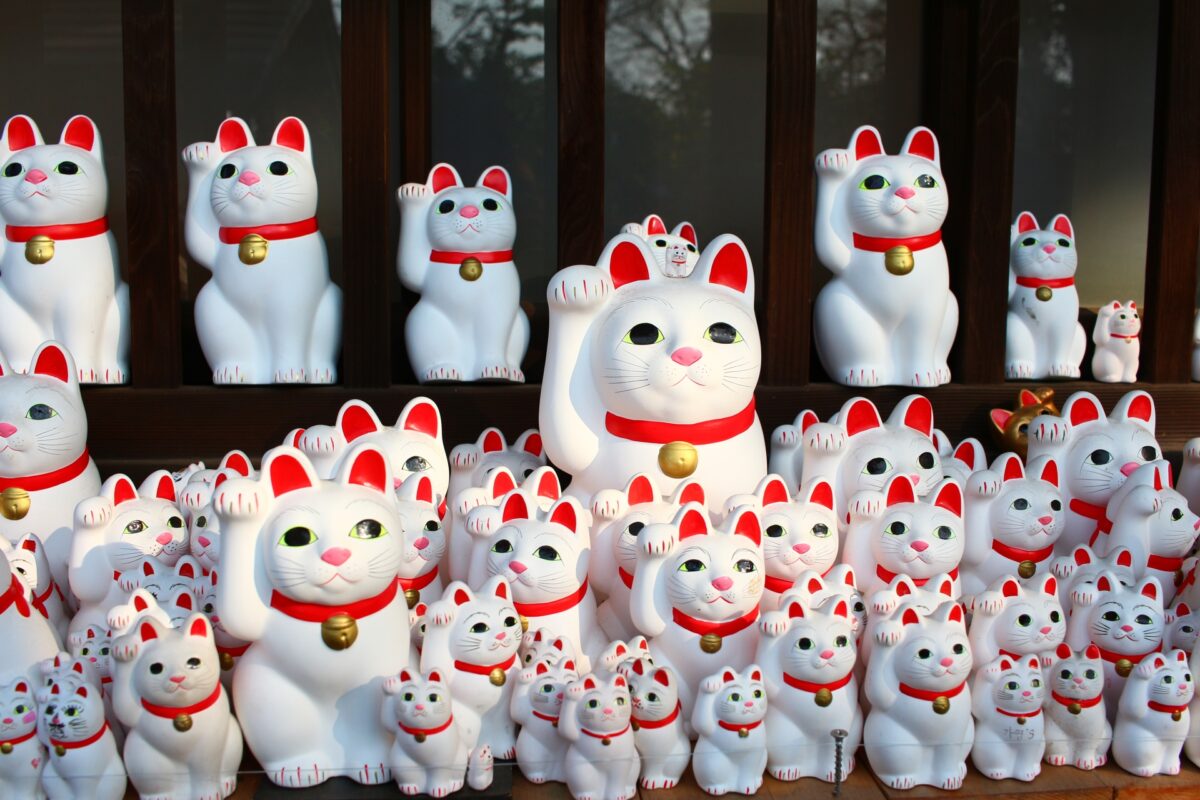
The Meaning of Maneki Neko
Small and large statues of the maneki neko can be found in places like temples, restaurants, and shops all over Japan. Generally, you could say that the maneki neko brings its owner luck and fortune, but there are some variations in its meaning depending on which hand makes the beckoning gesture. If the cat is waving its left paw, it is inviting customers into the store or restaurant behind it. When the right paw is up, the cat is inviting good fortune and money for the owner. A maneki neko with both paws raised is a bit more rare, but if you happen upon this type of lucky cat it is providing its owners with protection. They also say that the higher the paw(s) is raised, the stronger its lucky effect will be.
Maneki Neko’s Colors and Component Meanings
Most maneki neko are made of ceramic, but there are also cats that are made of plastic, wood, or even expensive materials such as jade or gold. They also come in various colors, all of which have a different meaning. This is an overview of the most common maneki neko colors and their interpretation:
- Calico cat color: this is the luckiest color
- White: positivity and happiness
- Black: protection
- Red: for a good love life
- Gold: money and fortune
- Green: health and education
- Blue: wisdom and success
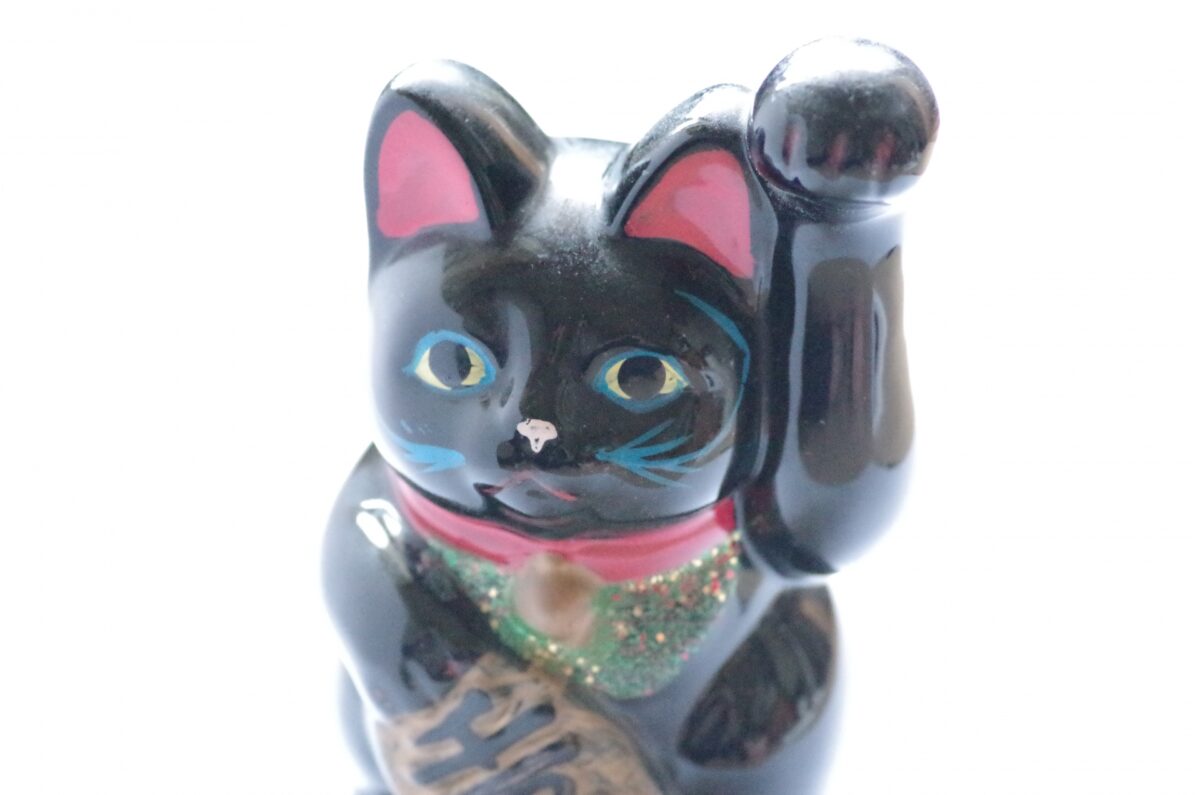
Similar to the fox statues in front of inari shrines, maneki neko cats also hold and wear things that carry symbolic meanings. Here are some commonly worn and held items and what they mean:
- Collar with bell: just like the pets of wealthy owners in the Edo Period, maneki neko often wear this accessory to show it belongs to a well-to-do owner
- Bib: they are likely worn in a similar way that many jizo statues in temples and shrines wear their red bibs for protection
- Traditional coin: the oval-shaped large coin is worth 1 ryo (around 1000 USD in today’s worth). Sometimes it says ‘千万両’ (10 million ryo), an astronomical amount of money, especially back in the day.
- Fish: usually you see a carp depicted, as they stand for strength and vigor. Fish are also symbolic of a bountiful catch and wealth.
- Ball or gemstone: this represents wisdom and is also connected to money
- Sake barrel: the empty sake barrel wards off evil and brings in luck
- Hammer: when this hammer is shaken, it is supposed to shower wealth
- Daikon radish: this large vegetable symbolizes wealth and good luck
- Drum: a drum symbolizes a shop that is overflowing with customers
It is always interesting to have a closer look at traditional items like the lucky cat and find out more about the meaning of all the symbolism that’s in the details.
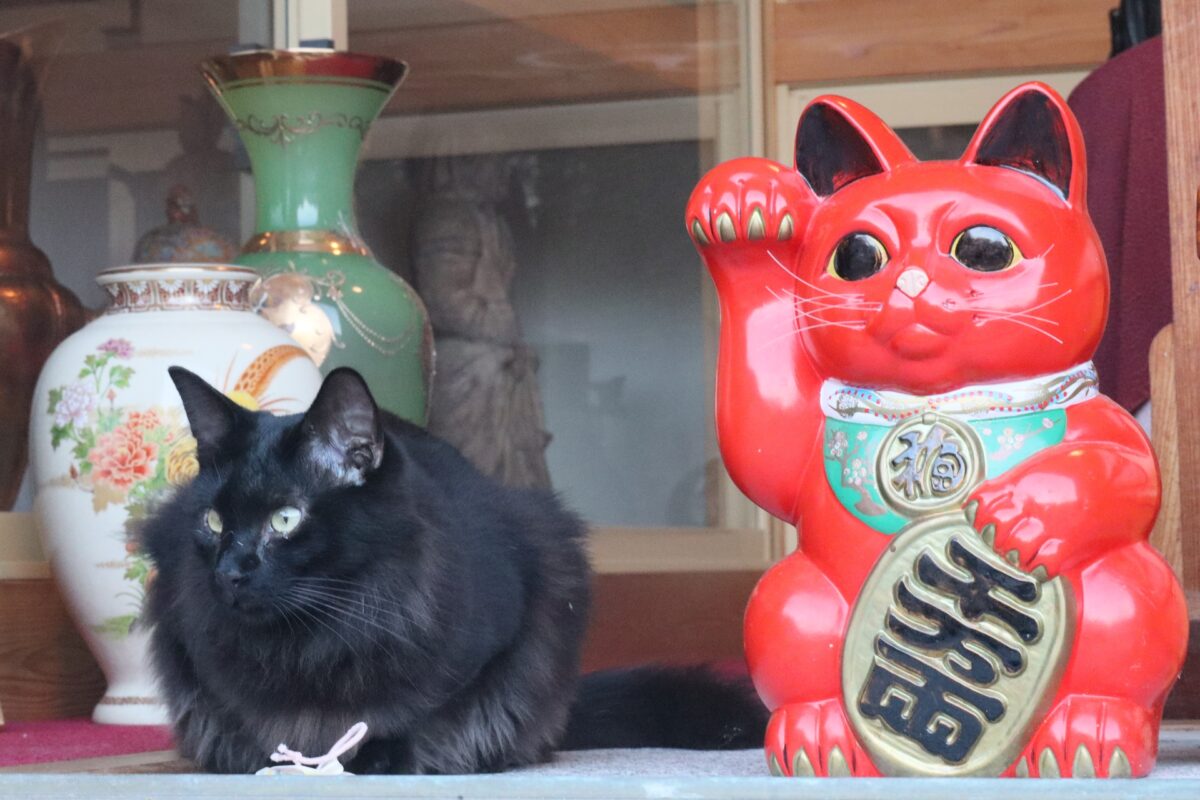
Traveling in Japan

If you enjoy hearing interesting background stories about the places you travel to and the culture you are discovering on your trips, booking a private guide on one of your travel days is a great idea. Private tours give you the opportunity to go deeper below the surface compared to going it alone or joining a generic group tour. Because it is only you and your travel companion(s), the tour’s itinerary and the guide’s stories can be completely adjusted to fit your interests and needs. Whether you decide to book a tour to hit the ground running at the start of your trip or to ask all the questions that popped up during your trip at the very end, it will be one of your most memorable Japan experiences for sure. We offer private tours in Tokyo, Kyoto, Osaka, Hiroshima, and other cities. Check out what we have on offer and make sure to book your favorite tour before you come to Japan!
Follow us on Instagram, Facebook, Twitter, and TikTok for more travel inspiration. Or tag us to get featured!
Happy traveling!
Stay informed of the best travel tips to Japan, the most exciting things to do and see, and the top experiences to have with the Japan Wonder Travel Newsletter. Every week we will introduce you to our latest content.
